| View previous topic :: View next topic |
| Author |
Message |
PaulC


Joined: 23 Dec 2008
Posts: 2318
|
 Posted: Fri Mar 05, 2010 6:45 pm Post subject: Commando quality revisited Posted: Fri Mar 05, 2010 6:45 pm Post subject: Commando quality revisited |
 |
|
PaulC wrote:
I ran a new test on the Ensign Commando, using a 5D Mk2 as the light meter. Last time the lab mucked up the development but after I had a chat with them they made the effort to get it right this time. I took the shots around noon, so the light conditions couldn't be much worse.
First, the Museum of Islamic Art in Doha:
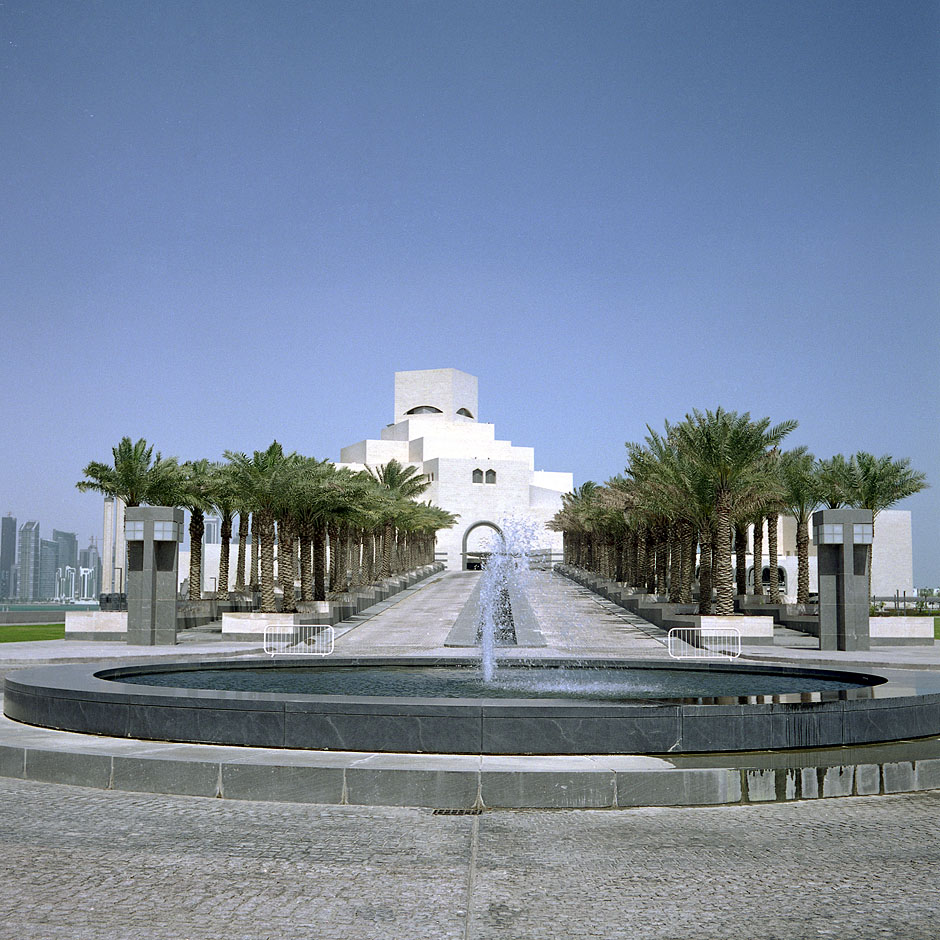
Next, a Jalibut moored outside the museum, identified by its vertical prow - I mistakenly ID'd it as a shuwa'i originally.
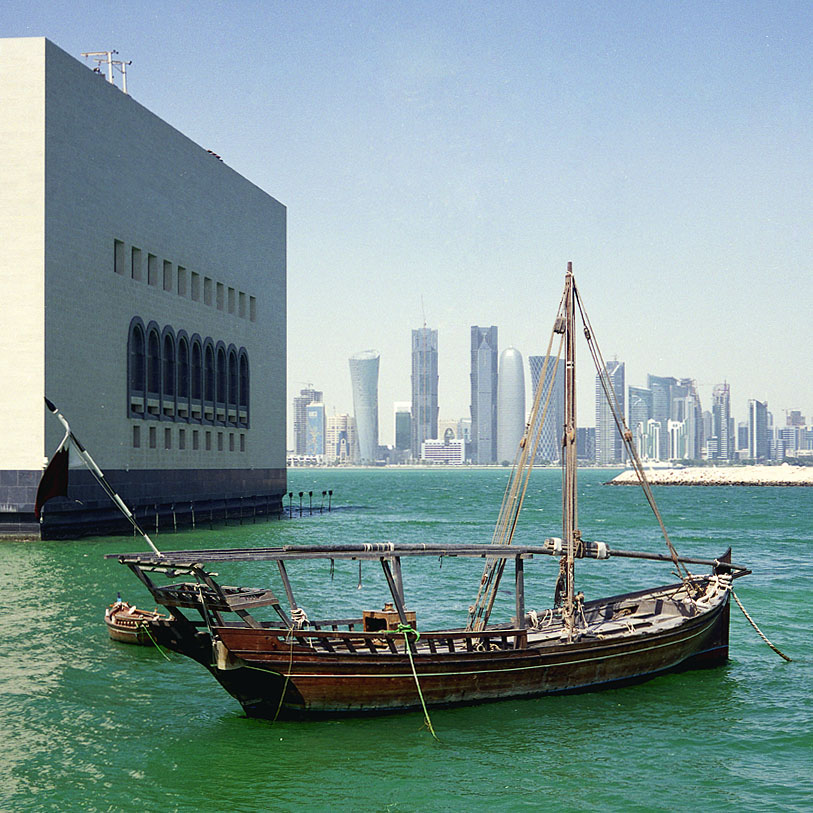
And here is the museum viewed from the east side:

A view of the line-up of different kinds of dhow, the large trading boum is in the foreground. Then two 72dpi crops taken from that picture scanned at 65MB, which is about 22 megapixels, to show the detail of the sheaves in the rigging of the boum and the flags and wind-blown palms - I was waiting to get the flags just right in this shot.
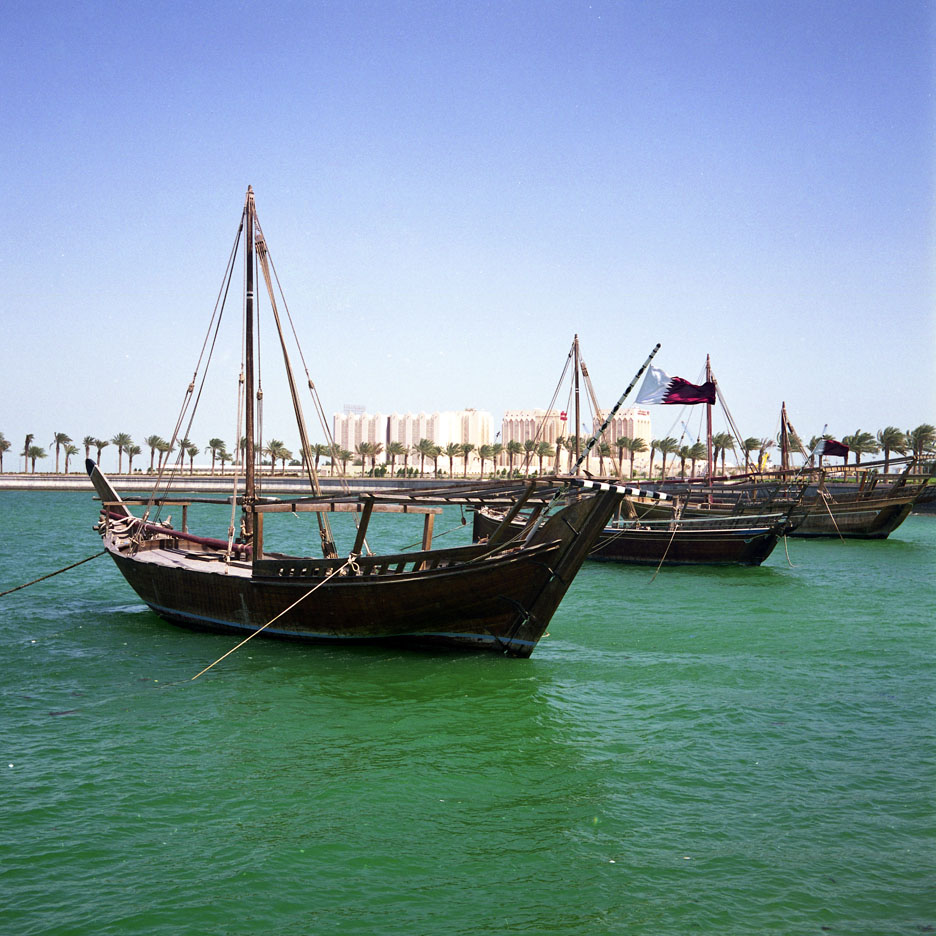
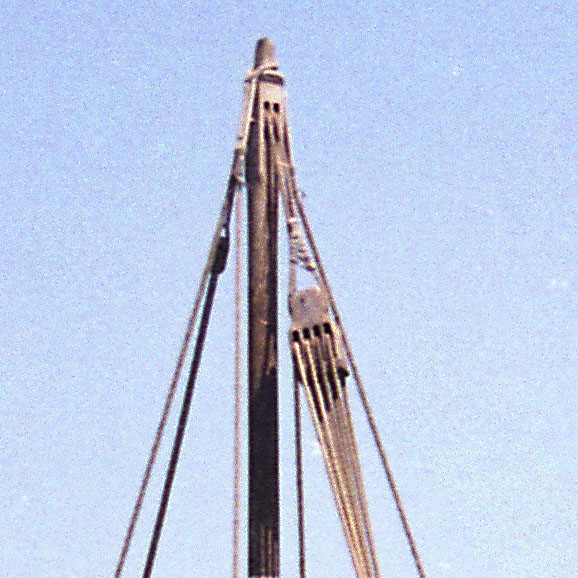
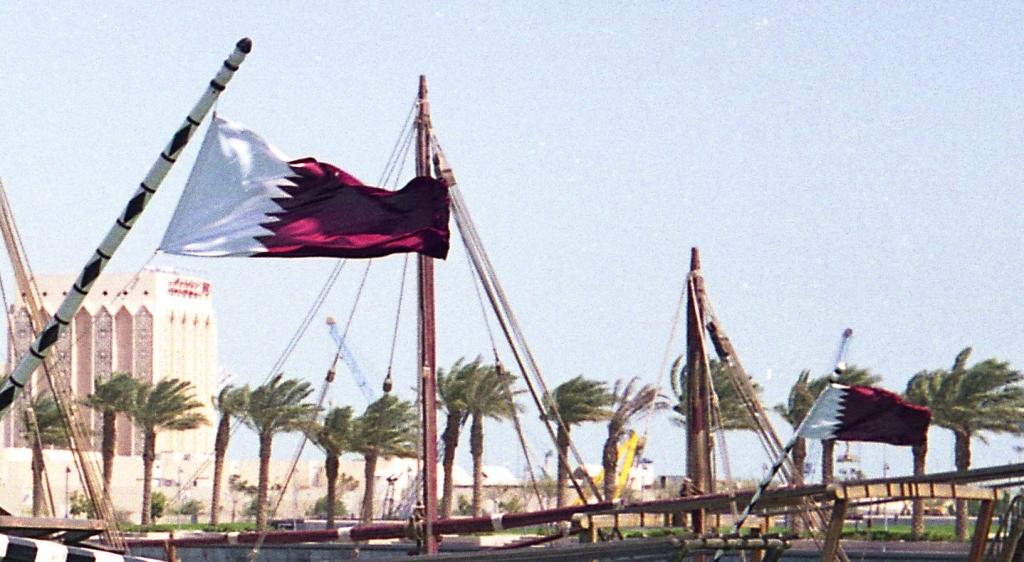
I reckon the Commando, its rangefinder, the Epsilon shutter and the 75mm/3.5 Ensar lens all pass muster.
_________________
View or buy my photos at:
http://shutterstock.com/g/paulcowan
Last edited by PaulC on Sat Mar 06, 2010 7:27 pm; edited 1 time in total |
|
| Back to top |
|
 |
scsambrook


Joined: 29 Mar 2009
Posts: 2167
Location: Glasgow Scotland
Expire: 2011-11-18
|
 Posted: Fri Mar 05, 2010 11:45 pm Post subject: Posted: Fri Mar 05, 2010 11:45 pm Post subject: |
 |
|
scsambrook wrote:
Now you want an Autorange 820 and an Autorange 16/20 to keep it company (see http://www.cosmonet.org/camera/index_e.html) - !
I wonder why Ensign never made an Autorange 12/20?
_________________
Stephen
Equipment: Pentax DSLR for casual shooting, Lumix G1 and Fuji XE-1 for playing with old lenses, and Leica M8 because I still like the optical rangefinder system. |
|
| Back to top |
|
 |
fish4570


Joined: 06 Jan 2010
Posts: 4514
Location: At the confluence of the Locust Fork of the Warrior River and Black Creek, Alabama
Expire: 2012-03-21
|
 Posted: Sat Mar 06, 2010 5:31 am Post subject: Posted: Sat Mar 06, 2010 5:31 am Post subject: |
 |
|
fish4570 wrote:
pass muster, indeed. love the juxtaposition of the ancient vessel types with the ultra modern oil-money skyline. where do the boatbuilders get their wood for the dhows and boumas?
_________________
Paul
I chase Light
http://blackcreekjournal.blogspot.com/ |
|
| Back to top |
|
 |
PaulC


Joined: 23 Dec 2008
Posts: 2318
|
 Posted: Sat Mar 06, 2010 6:07 am Post subject: Posted: Sat Mar 06, 2010 6:07 am Post subject: |
 |
|
PaulC wrote:
| fish4570 wrote: |
| pass muster, indeed. love the juxtaposition of the ancient vessel types with the ultra modern oil-money skyline. where do the boatbuilders get their wood for the dhows and boumas? |
Typical journalist, always another question! I understand that the wood comes from India. Contacts between the Gulf and the Subcontinent are ancient. There is more than you could ever want to know about the dhows of Qatar here http://catnaps.org/islamic/boats.html
I like the old vs new effect, too. I've focused on it many times. Here's another shot that emphasises it but I really need to get down there with a 200 or 300mm lens on a digital camera to squeeze the perspective more effectively.
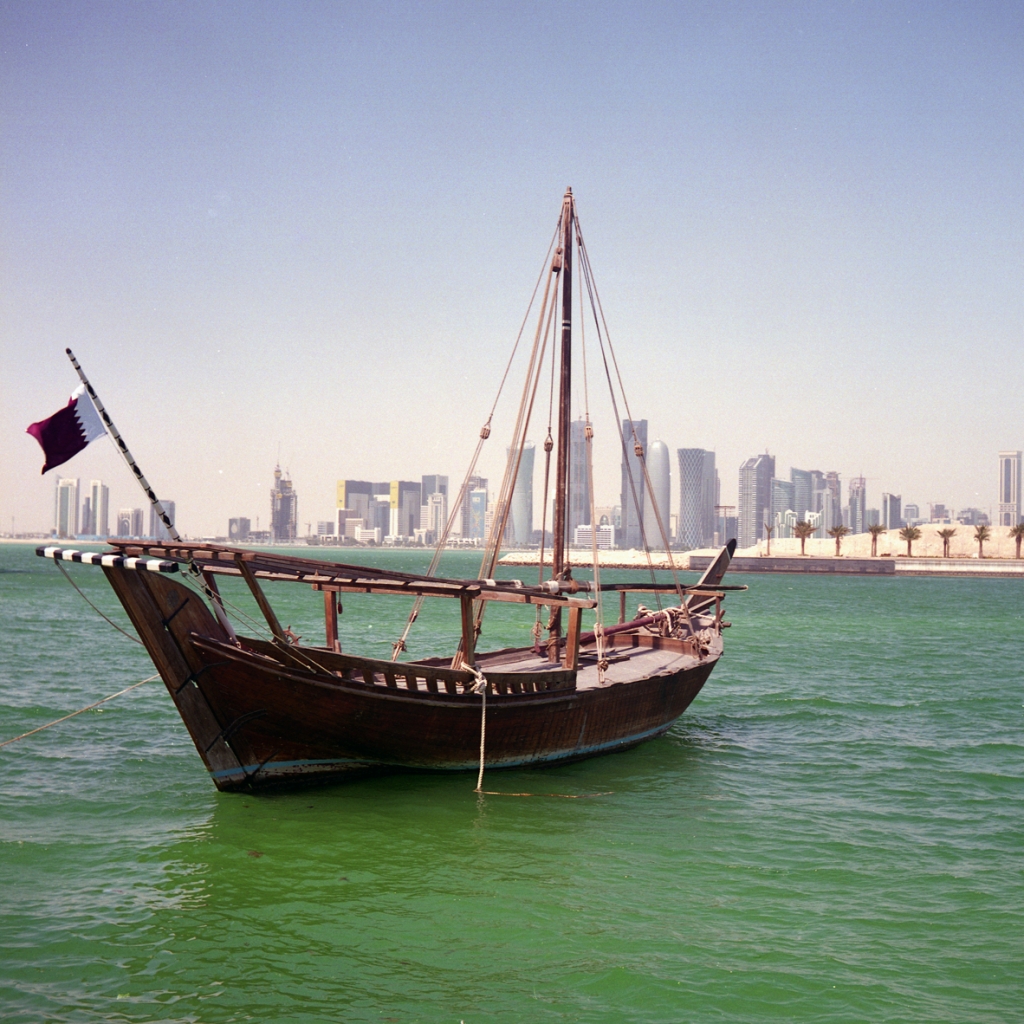
_________________
View or buy my photos at:
http://shutterstock.com/g/paulcowan
Last edited by PaulC on Sat Mar 06, 2010 7:29 pm; edited 1 time in total |
|
| Back to top |
|
 |
PaulC


Joined: 23 Dec 2008
Posts: 2318
|
 Posted: Sat Mar 06, 2010 6:41 am Post subject: Posted: Sat Mar 06, 2010 6:41 am Post subject: |
 |
|
PaulC wrote:
But apparently they did, you can buy a 1947 instruction manual for it: http://www.testreports.co.uk/photography/ap/stock/Model.asp?Model=711&ModelPage=true
Yet, curiously, that is the only mention I can find of it on google. I wonder if the design was dropped after the manual been sent out to the printers. At that date, it would have been a direct competitor for the Commando, which would have been pretty stupid.
_________________
View or buy my photos at:
http://shutterstock.com/g/paulcowan |
|
| Back to top |
|
 |
scsambrook


Joined: 29 Mar 2009
Posts: 2167
Location: Glasgow Scotland
Expire: 2011-11-18
|
 Posted: Sat Mar 06, 2010 11:15 am Post subject: Posted: Sat Mar 06, 2010 11:15 am Post subject: |
 |
|
scsambrook wrote:
| PaulC wrote: |
But apparently they did, you can buy a 1947 instruction manual for it: http://www.testreports.co.uk/photography/ap/stock/Model.asp?Model=711&ModelPage=true
Yet, curiously, that is the only mention I can find of it on google. I wonder if the design was dropped after the manual been sent out to the printers. At that date, it would have been a direct competitor for the Commando, which would have been pretty stupid. |
Well spotted - I failed to see that reference earlier! As you say it seems to be the only return from Googling and I don't think there was ever any reference to an Autorange 12/20 at the time the 820 and 16/20 came out. I used to read all (well, not really many) photo mags at the time.
The Commando was discontinued well before the Autorange 820 and 16/20 came out, so I don't think the issue of direct competition really applies. There WAS a "Selfix 12/20 Special" with an uncoupled rangefinder, with a companion "Selfix 820 Special", but oddly never a "Selfix 16/20 Special". Maybe, just maybe, Ross Ensign felt the square negative was less attractive to buyers of up-market folding cameras than the oblong formats . . . , who knows?
All the company records for Ross seemingly vanished when the business was finally closed down, a great shame as the firm was one of the most important players in the British photo-optical and equipment industry.
_________________
Stephen
Equipment: Pentax DSLR for casual shooting, Lumix G1 and Fuji XE-1 for playing with old lenses, and Leica M8 because I still like the optical rangefinder system. |
|
| Back to top |
|
 |
PaulC


Joined: 23 Dec 2008
Posts: 2318
|
 Posted: Sat Mar 06, 2010 12:06 pm Post subject: Posted: Sat Mar 06, 2010 12:06 pm Post subject: |
 |
|
PaulC wrote:
Yes, the 820 was much later but the date given for the manual on that link would coincide with the final big push they did with the last version of the Commando. I think the company was also undergoing a merger with Ross at the time, wasn't it? So plans could have been being shaken up.
When the 820 finally did appear it offered a square option, albeit with a longer focal length than normal, and maybe they thought that was enough.
_________________
View or buy my photos at:
http://shutterstock.com/g/paulcowan |
|
| Back to top |
|
 |
Seele

Joined: 17 Apr 2009
Posts: 742
Location: Sydney Australia
|
 Posted: Mon Mar 08, 2010 1:08 pm Post subject: Posted: Mon Mar 08, 2010 1:08 pm Post subject: |
 |
|
Seele wrote:
I had a play with an Ensign Autorange 820 and found that it has a fundamental design fault: another example of scatty Ensignery I guess.
Think of the whole lens, baseboard, bellows mounted in a crate as a self-contained unit, and in a rollfilm folder, it is fitted - and integral - to the rollfilm system. In the 820, thtey remained two separate units, and the focussing action alters how far the crate extends from the rollfilm unit.
This creates a very frustrating scenario: you use the rangefinder to do the focussing, and when you grab the sides of the camera - the roll holders so to speak - your fingers would push the crate back to the infinity position.
Ensign got burnt by the film plane focussing system in the Commando, as the spring cannot be assured to give a constant pressure on the back of the backing paper, to ensure film flatness and precise positioning. The Autorange 220 was a more sensible solution, copied from Newman & Guardia's Sibyl but was not really nice to use for an eye-level camera. |
|
| Back to top |
|
 |
PaulC


Joined: 23 Dec 2008
Posts: 2318
|
 Posted: Mon Mar 08, 2010 3:13 pm Post subject: Posted: Mon Mar 08, 2010 3:13 pm Post subject: |
 |
|
PaulC wrote:
I wondered about the effects of cranking the film gate to and fro. So far, I don't seem to have had a flatness problem, at least, not one that it obvious to me. I suppose it could vary from camera to camera or perhaps the thinner backing paper of modern films is easier for the pressure plate to deal with.
A bigger problem with commandos today seems to be the broken patent wind-on lock. Unfortunately, I can't find any instructions on the net on how to get inside the thing to sort out the problem and I don't want to mess about aimlessly with a camera that is working well.
Ensign does not seem to have been a very well-managed company, in terms of strategic planning (e.g. let's not bother getting sucked in to this nasty 35mm fad) or it ability to assess the viability of its innovations.
_________________
View or buy my photos at:
http://shutterstock.com/g/paulcowan |
|
| Back to top |
|
 |
Seele

Joined: 17 Apr 2009
Posts: 742
Location: Sydney Australia
|
 Posted: Mon Mar 08, 2010 3:28 pm Post subject: Posted: Mon Mar 08, 2010 3:28 pm Post subject: |
 |
|
Seele wrote:
| PaulC wrote: |
| Ensign does not seem to have been a very well-managed company, in terms of strategic planning (e.g. let's not bother getting sucked in to this nasty 35mm fad) or it ability to assess the viability of its innovations. |
Ensign (in its many incarnations) could not count effective product planning as its forte. Many of its products were introduced in that "suck it and see" manner, and some which held promise were let down by unsatisfactory execution and/or poor planning. Regarding 35mm, while Ensign never made a 35mm camera (although the Multex came close), the only foray I can think of is a 35mm negative carrier for its enlarger.
I have an example of the original Autorange (as in not Selfix-based). Bits fell off, once the baseboard is opened it takes three of you to get it closed again... sure it was an old camera but other folding cameras of the same age - and indeed older - tend not to suffer quite as much. |
|
| Back to top |
|
 |
scsambrook


Joined: 29 Mar 2009
Posts: 2167
Location: Glasgow Scotland
Expire: 2011-11-18
|
 Posted: Mon Mar 08, 2010 8:32 pm Post subject: Posted: Mon Mar 08, 2010 8:32 pm Post subject: |
 |
|
scsambrook wrote:
| PaulC wrote: |
| . . . Ensign does not seem to have been a very well-managed company, in terms of strategic planning (e.g. let's not bother getting sucked in to this nasty 35mm fad) or it ability to assess the viability of its innovations. |
There's so much we don't know about the Barnet/Ensign/Ross operation that really it's hard to make any certain assessment of its business acumen. But I think it would be wrong to dismiss the firm as being oblivious to market trends in the late 1940s and early 1950s.
The 120 roll film was still regarded as the choice of both 'happy snappers' and keen amateurs alike, in the UK at least. Camera clubs, which were still highly influential in forming opinions, and the photo press all inclined to recommend the larger negatives for 'serious' photography, and the developing and printing industry was still wedded to the contact print - 6x9 was fine, but the 35mm film needed enlarging to be seen. Hand enlarging was slow and not profitable. Colour negative film was in its infancy, and the amount of colour slide film sold was - relatively - miniscule.
I doubt any UK market research conducted in the first half of the 50s would accurately have predicted trends in the next five years. Two things upset the equilibrium. The first was the photofinishing industry's realisation that automated machine-made enlargements could be turned out at with higher selling prices and greater profitability than contact prints thanks to new equipment. The second was a growing interest in colour film partly driven by wider choices and falling prices. The end of the 'serious' high volume roll film camera market only came after innovations in other sectors of the photographic industry - including better emulsions and processing materials for the 'serious' photographer.
But, as Paul suggests, the lack of an established domestic 35mm camera production base in the UK meant that firms found it nearly impossible even to try to move into that market sector. Most German firms had already been making roll and 35mm models side by side for many years, a reflection on the nature of their home market and its customers. Once import restrictions began to be lifted after 1958, the UK camera industry almost inevitably went into a terminal decline.
_________________
Stephen
Equipment: Pentax DSLR for casual shooting, Lumix G1 and Fuji XE-1 for playing with old lenses, and Leica M8 because I still like the optical rangefinder system. |
|
| Back to top |
|
 |
|
|
|
You cannot post new topics in this forum
You cannot reply to topics in this forum
You cannot edit your posts in this forum
You cannot delete your posts in this forum
You cannot vote in polls in this forum
|
